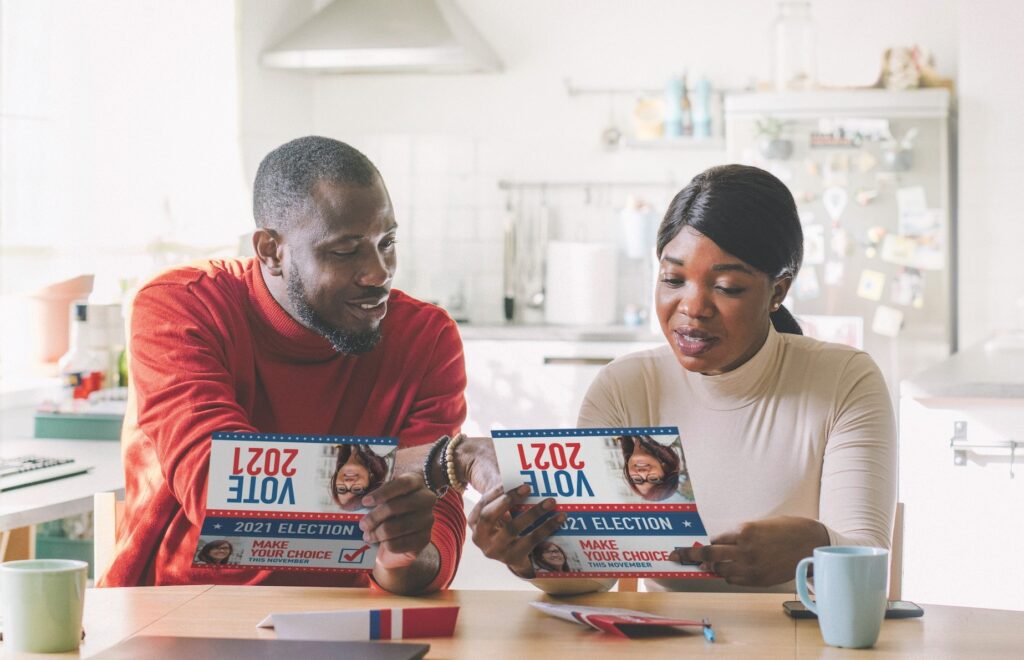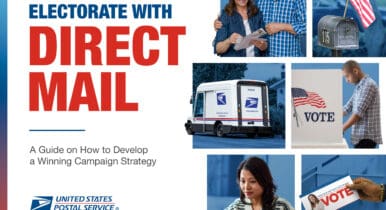Delivering Authenticity: How Campaigns Can Leverage Direct Mail to Build Authentic Connections


If the past 18 months have taught us anything about campaign strategy, it is the importance of reaching voters where they are, in the right place, at the right time. However, it is not enough to just reach people – building authentic connections with voters is a crucial component of a winning strategy.
In an effort to learn more about changing perceptions in political advertising channels, the United States Postal Service commissioned our most comprehensive research to date, conducted in the months following the 2020 elections. This research included post-election surveys of Americans and political consultants, focus groups, and in-depth interviews.
Our new white paper – Delivering Authenticity: How to Effectively Leverage Direct Mail to Build Authentic Connections – provides a strategic roadmap for using direct mail effectively in political campaigns for 2021 and beyond. Top takeaways for campaigns include:
Use Mail to Build Trust and Reinforce Other Channels
Over half of Americans find direct mail more trustworthy than online ads (54%) and TV ads (53%). Most Americans (59%) also believe direct mail is the most factual form of political advertising. This applies to both men and women and is stronger among Hispanic (69%) and Black (64%) Americans. Campaign consultants also value direct mail with nearly half (47%) believing it is the most effective type of political advertising to educate voters. Additionally, several members of our focus groups said they used direct mail as a starting point, then turned to the Internet to learn more about a candidate. This means campaigns can maximize direct mail’s reach and take their mail pieces from a physical media experience to a digital one.
Build an Authentic Connection with Voters – But Take Cultural Relevance Seriously
Americans respond positively to targeted messaging when it’s done in a culturally relevant way.
For example, our report found most Hispanic Americans appreciate bilingual mailings and 64% said direct mail was the most memorable form of advertising for them. However, while a third (32%) speak Spanish as their primary language, only a quarter (26%) received political mail in Spanish in the 2020 election cycle. Those who did receive mail in Spanish said they were more likely to read it than those who only received mail in English. Regardless of language, this group also emphasized that the mail needed to feel authentic and resonate with their community’s specific issues. This highlights the importance for campaigns to hire diverse creatives and staff who can authentically tell the stories of their constituencies.
Voters Have Strong Memory Retention of Mail – Reinforce This Through Strong Design
Part of direct mail’s impact is due to staying power and physical presence. Over half (53%) of Americans say it’s harder to ignore than TV with this number being even higher (69%) with Hispanic Americans. Half of Americans said the mail was the most memorable form of advertising during the last election, and many focus group participants could recall the types of mail they’d received over 6 months ago with details like when they began receiving it or who it was from. Making mail visually appealing is also important with 45% of Americans more likely to read it, share with their friends (17%), or make a donation (11%).
Read the full findings on how to use direct mail as part of your larger campaign strategy to reach people where they are, as they are, and inspire action. Learn more about other direct mail insights, best practices in direct mail design, and navigating operational support at www.deliverthewin.com.
*Statistics are sourced from the “Delivering Authenticity: How to Effectively Leverage Direct Mail to Build Authentic Connections” white paper. The research includes post-election voter surveys and focus groups as well as insights from a political consultant survey and in-depth interviews.


